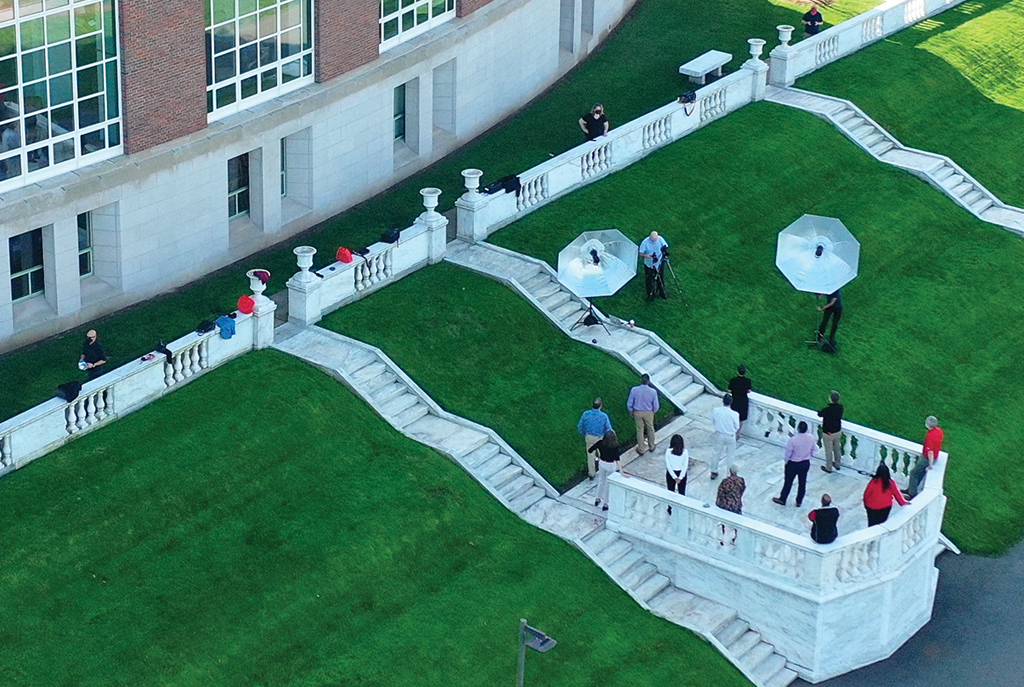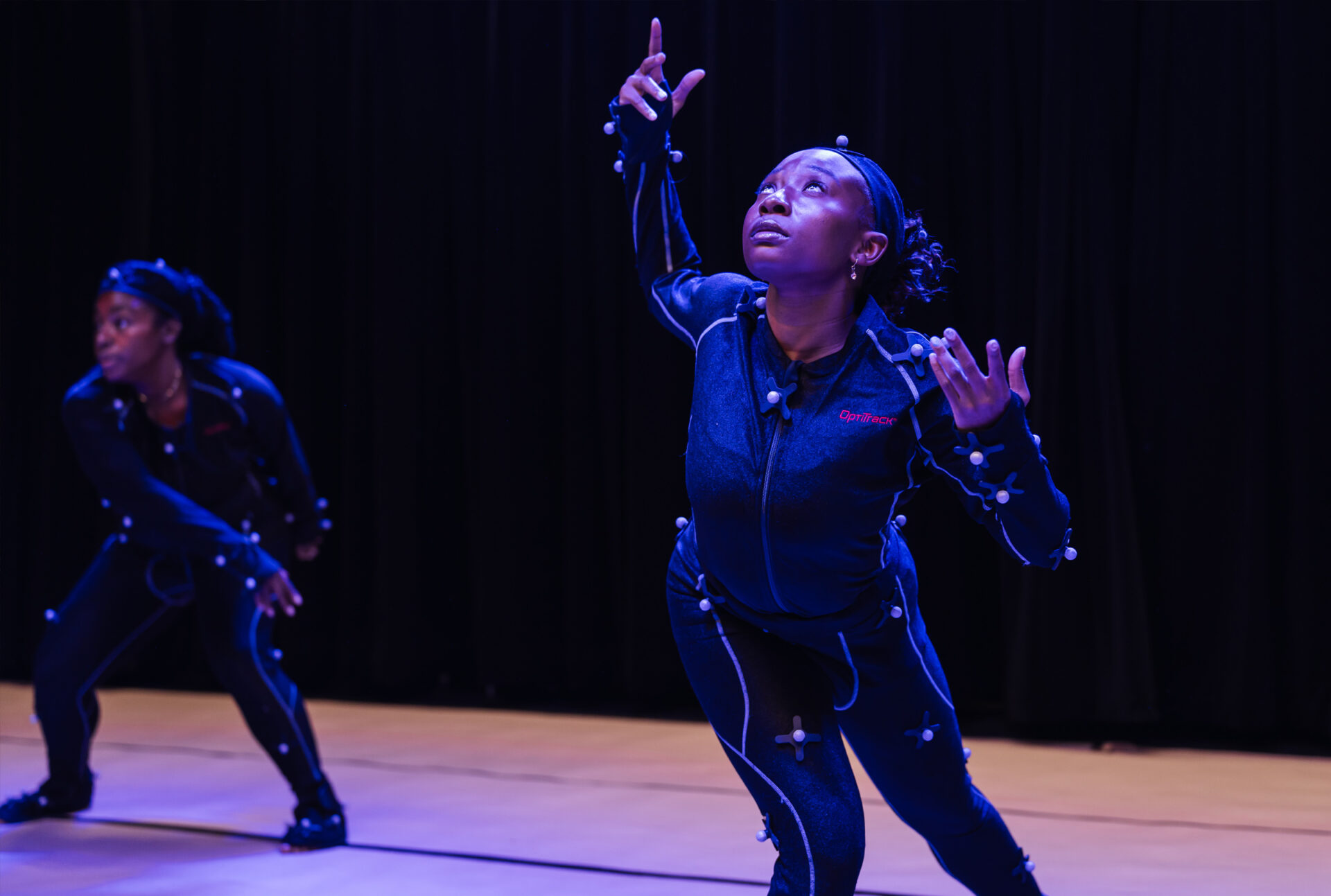Wesleyan Was Here: Albuquerque, 8th and Mountain
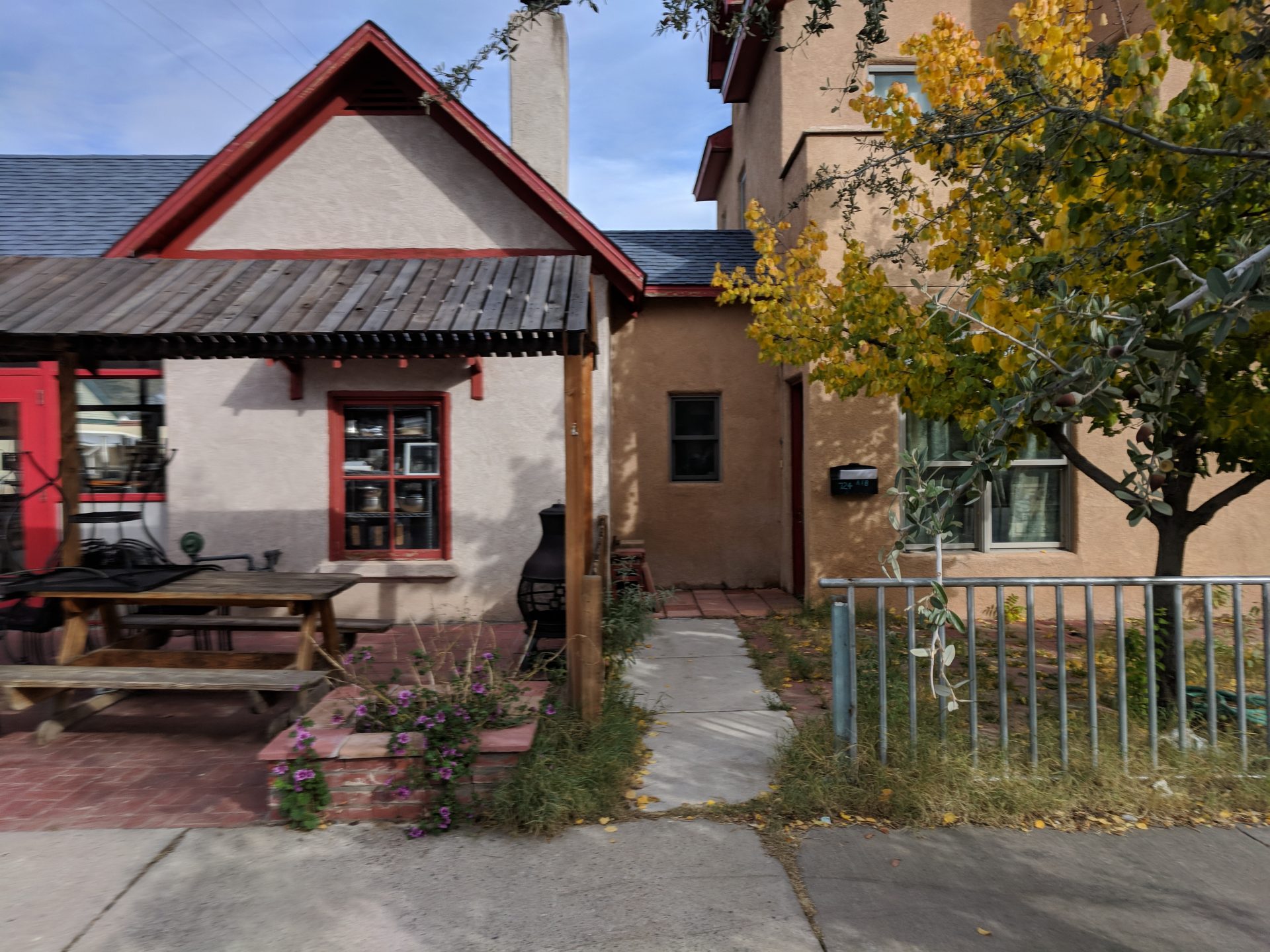
Whether it’s building a troll under a bridge in Seattle or rehabbing a neighborhood in Albuquerque (see below), Wesleyan alumni express their unique vision for their community in ways that leave lasting positive change. In this recurring Wesleyan Was Here section, we’ll share these stories.
Stefan Watson ’78 and Eileen Devereux ’76, brought their art, craft, inspiration, and opportunity to meet at a city intersection. On those four corners, they made a home and built a community.
How It Started: Visitors to Albuquerque, New Mexico, might note that the corner of 8th Street and Mountain Road is a charming neighborhood, not far from both the historic district and downtown. What they won’t know is that a Wesleyan couple made it what it has become today.
Back when they met at Wesleyan, Watson was just a sculpture student, son of a second-generation tile maker from New Mexico, and Devereux was a French major from a small Massachusetts town who had spent a junior year abroad in Paris. “It was a real awakening to see how other cities were laid out, how people lived, such a different environment from where I had grown up,” is how Devereux recalls that adventure in the City of Lights.
After Wesleyan, the couple moved to Santa Fe, New Mexico, a return to his roots, and a new place for her to explore. Their first jobs were on construction crews, building adobe houses, where Devereux was one of the only women on site. “At some point,” she says, “it dawned on me that I could take these skills and become an architect.” Later, with her degree, Devereux worked with international architect Antoine Predock, and then opened her own firm.
Meanwhile, Watson’s interests were leading him further down creative paths. As a tile maker and master craftsman (“my family was all crafts-oriented,” he notes), he was producing his own work and collaborating with artists such as Richard Tuttle, creating custom tiles and ceramics for Tuttle’s designs.
Watson was also a skilled papermaker—he now holds a doctorate in the subject—and had developed a business creating art-quality cotton rag paper. After noticing the substantial volume of cotton denim waste produced at a local Levi Strauss & Company plant, he conceived and implemented a full-circle recycling project for LS&Co. For 10 years, with manufacturing partners, he converted waste from Levi plants in Albuquerque and El Paso into corporate stationery and office products. When these factories closed and moved to Mexico, however, the process was no longer feasible. The project, along with Watson’s LS&Co. contract, ended.
Watson and Devereux found themselves contemplating a new beginning in Albuquerque.
Devereux wanted a place that would remind her of the best part of her hometown, where resources—grocery stores, restaurants, public transportation—were all within walking distance. Then the couple found a building that delighted them.
The structure had been, unmistakably, built in the 1920s, when automobiles first gained popularity. “These little gas stations were pretty common all over the country—it’s one of those little structures you see in old movies or neglected New England towns.” Except that this one was built of adobe bricks.
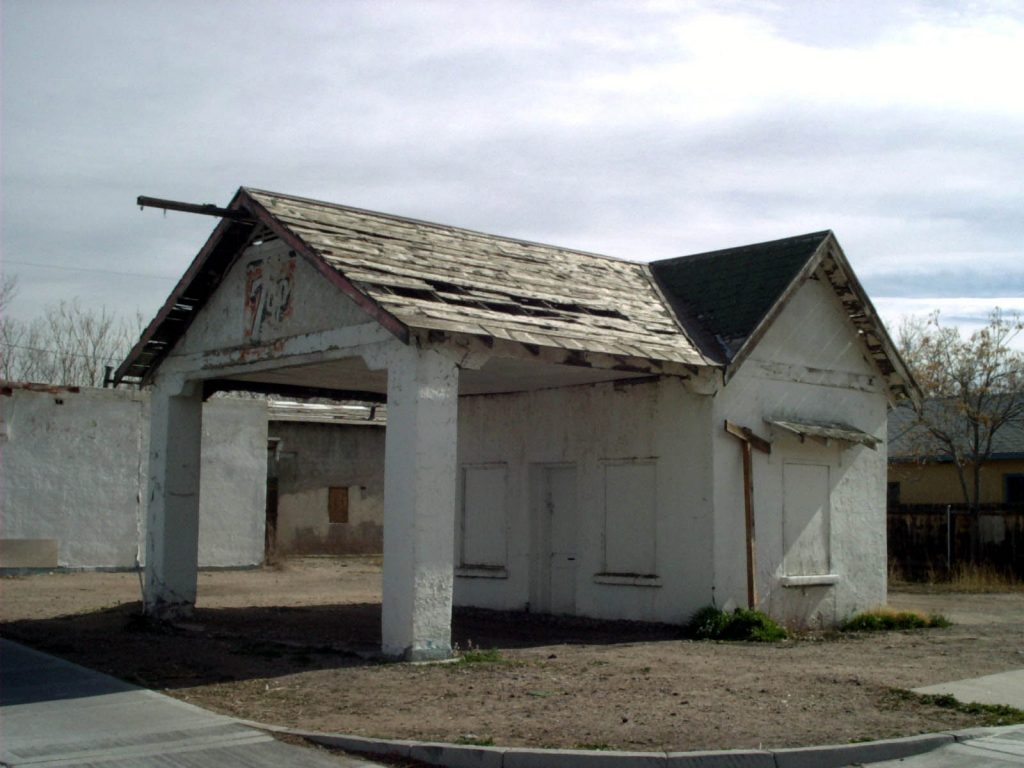
Perched at the corner of 8th and Mountain, it offered all the resources and accessibility Devereux desired. For his part, Watson could envision setting up his tile shop, with office space in back for Devereux and the couple’s living quarters, as well.
It wouldn’t be easy, though, and it would involve lots of people.
“All the buildings on each corner had been abandoned and were in disrepair,” Watson recalls. “Our friends saw the place and asked, ‘Why are you buying in the slum?’ But we said, ‘Oh, this is going to be great. This could be a whole nice little neighborhood.’ And everybody was like, ‘No, this is drugville; forget about it.’ But we certainly saw the potential, and Eileen certainly saw the opportunity to create a livable, sustainable environment. It was like my Levi project: I saw the waste and said, ‘Boy, let’s convert this into something good.’”
The two bought the gas station and began renovations on that single corner at 8th and Mountain. Neighborhood groups saw the activity and feared the two would tear down historic structures to erect a big-box store. Watson and Devereux began to get to know their new community, explaining that they shared with them a simple goal: a home in a welcoming environment.
Then, surprisingly, the other three corners of 8th and Mountain were offered for sale to the couple, one lot after the other. The old mercantile and two small houses—catty-corner to the gas station and owned by the same seller—had been under contract, but the deal fell through. Right away, the seller contacted Watson and Devereux: “Do you want another corner?” They did.
The next corner opened up when a friend who had been renovating across the street decided to jettison his project so he could follow his girlfriend to California and get married. Before departing, he sold his property to Watson and Devereux.
The fourth and final corner was owned by a man whose relative had set up residence in half of the duplex but had stopped paying rent. It seemed easier to him to sell the property to Watson and Devereux and let them ease out the family ‘guest’ rather than do it himself.
“So, we owned all four corners. We were living on one of them. And we were gradually developing the plans and getting the permits to do the construction on the properties, eight in all,” Watson recalls.
Now, fast forward 15 years: They’ve sold all but the original corner where they now live and work. “We converted the gas station into a café, and we built on behind it, where my office is now, and where we sell tile and custom projects. Now we’re converting part of both into a bistro and B&B, where people can come in and order food and spend the night. That’s our current project.”
To describe the flavor their renovation has brought to the community, Devereux shares a favorite moment: “Our son was home from college and we were sitting outside the café at a table. A neighbor, an 80-year-old woman who had told me she loved to dance, stopped by. She had wanted to learn the tango, and our son stood up and taught her a few steps, right on the street corner.”
Devereux recounts such neighborhood anecdotes—and there are plenty—in a small booklet, part of a neighborhood project aimed at capturing, through poetry, prose, and drawings, the character and vitality of the area.
The success of the intersection, now a popular spot in Albuquerque, comes from something simple, says Devereux: “When Stefan and I were working on this, we kept the fabric of the community. We kept pieces of what was there. We allowed the existing pieces to influence what we added on. And by redeveloping all four corners of the intersection, we created kind of a little center of gravity for this part of town.”
Today, Devereux notes, there is once again community. In the old mercantile lives an artist and her partner, a cellist. The two host art shows and musical events attended by both neighbors and city-wide residents. The house that was once the friend’s renovation project is now the home and teaching studio of a piano teacher. And the last corner? It is a busy hair salon.
And there’s something else that lies behind the magic of this intersection, which Devereux offers to other would-be developers: “If you can identify these sorts of centers of gravity in a town—like these four corners were—you can concentrate activity. Then, there’s a sort of energy that becomes part of the building, part of the development, and it becomes self-perpetuating, raising the energy level for the whole city.”
“That,” says Devereux, “is what architecture can do.”
***
The two note that their work at 8th and Mountain continues to have an effect on them still.
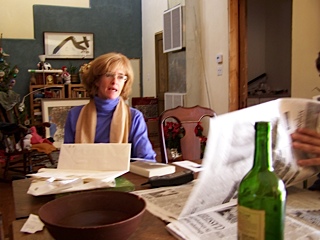
These days, Devereux remains active in issues of homelessness in Albuquerque, working with their neighborhood association. “Our work at 8th and Mountain made me more aware of the importance of the community,” she says. “I want to bring to bear my privilege and what I know in order to improve the prospects for folks here who are not sheltered.”
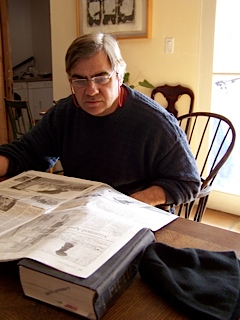
Watson’s tile shop remains an active anchor at the corner. There he creates custom work for homeowners, contractors, and artists. His work will be part of Richard Tuttle’s exhibition in New York City at the Pace Gallery later this year.

Avery Kaplan ’20 and Cynthia Rockwell MALS ’19, P’11 contributed to this article.

